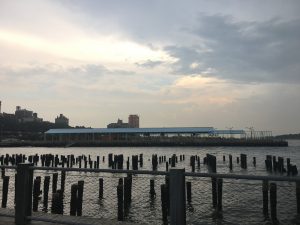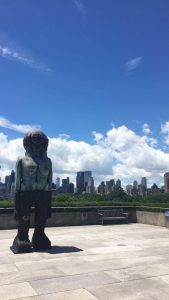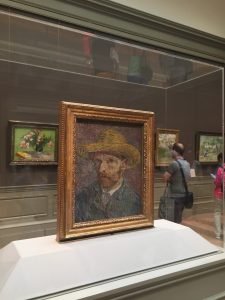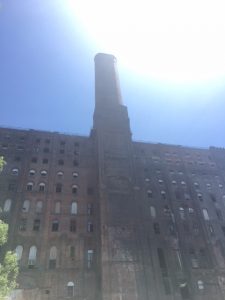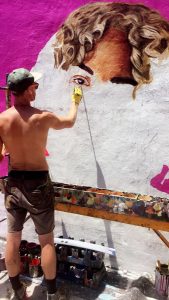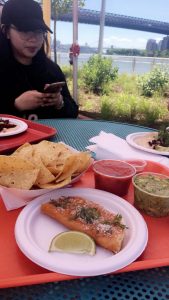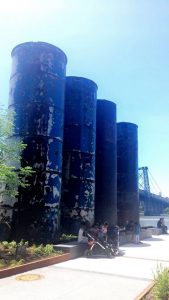Within the past year or so, I’ve been wanting to visit the Museum of the City of New York. I have always been fascinated with the history of New York City, and I never knew this museum existed until I saw an advertisement for it online. When I started this class in June, I learned from one of my classmates about Museum Mile, and I decided to visit it that night.
The Museum of the City of New York is open 362 days a year, and closed on Thanksgiving Day, Christmas Day, and New Years Day. Adult admission is $18, students and senior citizens pay $12, and anyone under the age of 19 is free of charge. The museum is normally open from 10am-6pm, but for the Museum Mile event it was free to enter between 6 and 9pm.
I took the train from school and missed my transfer, so I ended up having to walk from one side of Central Park to the other to get to the museum; it was a nice evening so I didn’t mind. The museum is, however, a short walk to the 6 train on Lexington Avenue, and the property even has ramp access, a wheelchair lift, and wheelchairs to borrow free of charge. They also have sign language interpreters for guided tours available upon request.
Because it was a special event, there was a large group waiting outside to get in for the 6 o’clock start. There were people of all ages and backgrounds, but I saw mostly adults, and very few small children. I took my brother, my aunt, and my cousin along with me to visit. I felt that we blended in with the crowd, and the staff was very welcoming to all the guests entering.
With nearly 205,000 objects in the collection of the Museum of the City of New York, it is easy to get lost in the history. The very first exhibit I walked through was called “New York at its Core,” an overview of the history of New York City from the time it was discovered by Henry Hudson in the early 1600s. From there, I read about the Dutch settlements, the shift from New Amsterdam to New York, Revolutionary times, the Civil War, the building of the Brooklyn Bridge, and photos by Jacob Riis, all the way to the fiscal crisis, the blackout, the origins of hip hop, and more. One thing I learned at that exhibit, and that really surprised me, was that Alexander Hamilton was born in the Caribbean. After walking around the exhibits on the main floor, it started to get very crowded.
While I spent most of my time on the first floor reading all the history of New York City, I did spend some time at nearly all the other exhibits, including “Through a Different Lens,” Stanley Kubrick’s Photography, “Beyond Suffrage,” an exhibition of women in politcs, and “Activist New York,” which included at least a dozen activist movements in the city and country. At these exhibits I learned that the very first Planned Parenthood was opened in Brownsville Brooklyn in 1916 and that Stanley Kubrick took more than 12,000 photographs in his five years as a staff photographer before directing movies.
Much to my surprise, the museum was opened by a Scottish-born writer, and housed in Gracie Mansion in 1923, and moved to its present location in 1932. This year, it made Forbes’ list of “Hundreds Of Fun Ways To Play In New York City This Summer”. The museum’s website is user-friendly and easy to navigate. I would recommend a visit to anyone interested in learning more about the history of our great city.
Photo-op before the exit 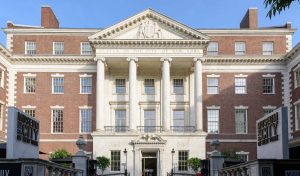
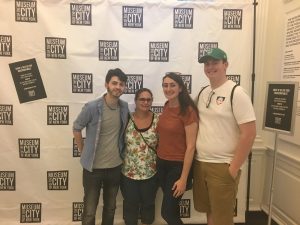
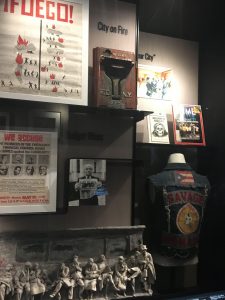
Sources
Manske, L. (2018, July 01). Hundreds Of Fun Ways To Play In New York City This Summer.
Retrieved from
https://www.forbes.com/sites/lauramanske/2018/07/02/hundreds-of-fun-ways-to-play-in-
new-york-city-this-summer/#2f9ee60228b4
Home, Museum of the City of New York. (2018, July 01). Retrieved from http://www.mcny.org/
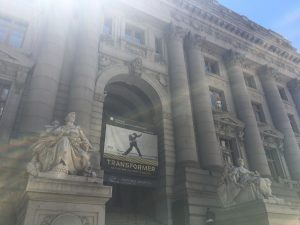
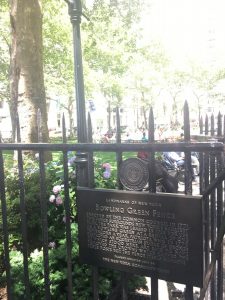
 It’s pieces of history like these, the Bowling Green Park and Evacuation Day, that I love learning about.
It’s pieces of history like these, the Bowling Green Park and Evacuation Day, that I love learning about.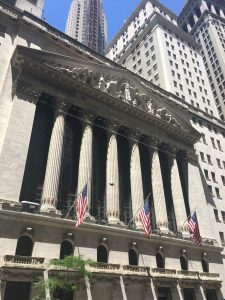 I have never visited the New York Stock Exchange before our walking tour, it was an impressive piece of work! I would love to take a tour inside one day.
I have never visited the New York Stock Exchange before our walking tour, it was an impressive piece of work! I would love to take a tour inside one day.
 I’ve always enjoyed walking around Trinity Church, but I have never before stepped inside its gates. I never knew Alexander Hamilton was buried there, and it was interesting to read about the death of his son. I also never knew that the church was rebuilt three times.
I’ve always enjoyed walking around Trinity Church, but I have never before stepped inside its gates. I never knew Alexander Hamilton was buried there, and it was interesting to read about the death of his son. I also never knew that the church was rebuilt three times.

 I have walked past the Oculus before, but never inside. It was really beautiful, and I enjoyed the ample natural light. I’d like to go back and spend more time inside in the future.
I have walked past the Oculus before, but never inside. It was really beautiful, and I enjoyed the ample natural light. I’d like to go back and spend more time inside in the future.

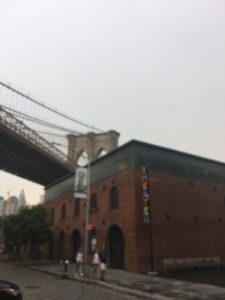


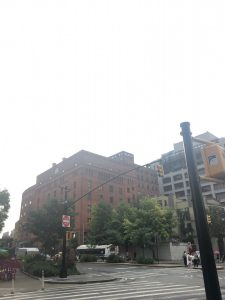
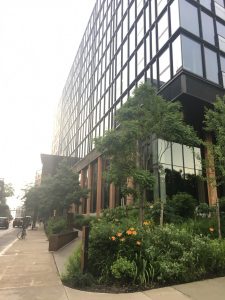
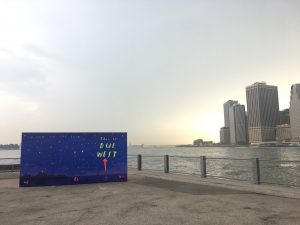
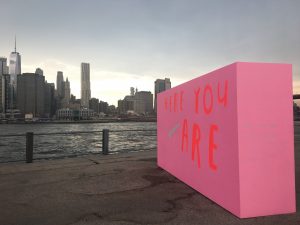 This here is the art installation I came across. The bright colors of the piece created a nice contrast with the stormy skies and the skyscrapers in the background.
This here is the art installation I came across. The bright colors of the piece created a nice contrast with the stormy skies and the skyscrapers in the background.